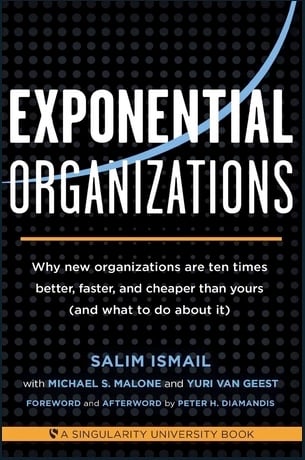How do you describe “insurance” or “healthcare” or “software” so your potential clients can grasp the value of something they can’t see?
Marketing the invisible is becoming more important as more businesses break down barriers and move their offerings into web-based, 24/7, solutions. However, without a tangible product demo or without something that people can play with, how do you market and sell your services?
Insight: Productisation has a positive impact on the sales process effectiveness and efficiency.
Data: In a study conducted to find out how productisation impacts sales efficiency, it was found that the average time of a won deal from end to finish decreased by 26%, proving that productisation makes the sales process more efficient. (Lauri Petäjä, 2016)
Key Action Point: Marketers and sales professionals need to learn how to balance how to create services and their ability to sell.
Selling tangible products like food or clothes is different from selling intangible products. To some extent, customers can see, feel, smell, or taste the tangible. But with the intangible, they can’t see what you’re offering, and they can seldom inspect or test it. It’s also not easy to show its features and benefits.
You can say that you are “leading” or “enterprise”, but that doesn’t bridge the gap into the reality of what you offer.
The goal of productisation is to package an offering, technology, or service in a way that a customer can understand the content of it in advance. Building an easy-to-understand product description clarifies in the mind of the customer the process that they will go through when acquiring something they can’t touch.
When customers can’t properly try the product first, you have to use metaphors. Promises, being intangible, have to be “tangibilised” in their presentation. Also, keeping customers for an intangible product requires constant reselling efforts so that the value is reinforced.
The Top Pitfalls of Productisation
There are a lot of complexities and problems associated with selling too many product offerings. Ivey Business Journal outlines them below.
-
Training issues for employees who need to understand and be able to ’talk’ the products
-
Bad decision risk and anxiety for customers who need to choose among the myriad of product offerings, often having to lock into a long-term ’service’ agreement
-
Consumption of resources in Marketing, IT, Finance and Operations as we manage these products
-
Dilution of vision and brand — do we want to be known in our segment for an excellent service or a variety of products?
Following that, there are key actions that can clarify a product.
Key Actions to Clarify a Service Offering
Your goal is to help customers justify a purchase decision. To do this, you need to bring to life your service.
1. Be clear about the functions, features, benefits, and implications. Focus on these things because, in the end, it’s not about the product you’re offering. What matters more to them are the outcomes they will get if they choose to do business with you. People tend to worry about many things, so what pain point does your product remove? What will their life be if they acquire your services?
2. Build in a lot of content about the offering. Build a content strategy to share your product’s story, educate your target customers, and compel them to buy. It can include blog posts, ebooks, white papers, and videos. It’s also important to remember always to include a call to action in each content so your potential buyers will know what their next step is after consuming that piece of content.
3. Optimise your process for onboarding. Be clear about what clients can expect. Establish milestones and define their desired outcome to set your new clients’ expectations. Their onboarding experience must be specific to their needs.
4. Simplify the pricing. Published pricing lowers barriers to entry and removes tire kickers.
5. Speak in easy-to-understand terms. Talk in your customers’ vocabulary. Using industry jargons may prove how knowledgeable you are about your product — but it won’t help sell your product to customers.
6. Demonstrate the success of your service with case studies and testimonials. Search Engine Land reports that nine out of 10 people check product reviews and customer feedback on social networks before making a purchasing decision. Customer success stories make your product more authentic. Case studies can deepen customer loyalty and encourage word-of-mouth promotion.
7. Build in systems that are easier to scale. Streamline your operations, hire key talent, use third-party tools to make your process more efficient.
Conclusion
By packaging your services as a product, you are adding more leverage to your business. If you follow the tips above, you can provide better value to your customers and build a lasting relationship with them, allowing you to gain insight into their pain points and leverage it to improve your value proposition.
Editor’s note: This article was originally published in Creative Development and has been republished with permission. This was edited and updated for freshness and relevance.















